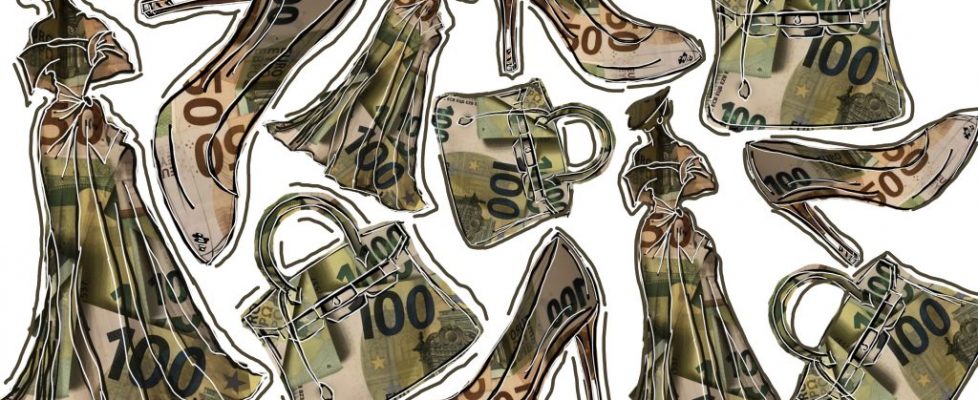Profit: The new oxygen of life
Money, success, money, success and money again. Fashion is not just art, it is a business, and what is the fuel for every business? Money – which is gained by profit. Profit is the most predominant pillar of those which make up the fashion industry, it is an exigency for any business which endeavours success. Renovating and investing in new products can only be done once profit is turned, and for an industry such as fashion, with ever-changing trends, its accomplishment is based on profitability.
Being one of the largest industries in the world, the revenue of the fashion industry stands at 1.53 trillion US dollars for 2022 and is forecasted to increase in 2023 to 1.7 trillion US dollars. (Smith, P, Statistica, 2023). In the UK, the industry was predicted to generate 58.5 billion British pounds in 2022. The significance of fashion for the global economy is proved in its workforce, out of the 430 million people in the global labour force, approximately 3.4 million work for the fashion industry. (Zippia, 2023). The varying sectors of the fashion industry makeup for its revenue, with US Women’s apparel generating the greatest amount – approximately 163 billion US dollars. (Smith, P, Statistica, 2023). External factors such as seasonal, environmental and economic greatly affect how the sectors of fashion perform e.g., the demand of loungewear is greater during colder seasons and piqued during the lockdowns due to COVID-19, (bbc.co.uk Covid – shoppers swap party clothes for loungewear) and therefore these sectors turn/turned the most profit due to the seasonal and environmental circumstances.
A vital way of measuring a brands accomplishment is by assessing how they perform and cater to their audience during uncertain economic times. This is where several crucial business changes withhold responsibility in navigating the brand – increase in digital marketing tactics, modifying supply chains, reassessing product prices, distributing more consumer convenient products etc. For example, due to COVID-19, the economy was in a recession, the world went into lockdown and globally, everyone became more price-sensitive. In this instance, businesses; turned to social media platforms such as TikTok (which gained popularity during this stay-at-home period) to market their products, held vast sales to entice consumers who were cutting back on spending and sold more consumer convenient products such as loungewear.
Creative vision and commercial reality. Art and business. The complex relationship between the two are challenging to bridge, but not impossible, as proved by luxurious fashion brands whose designers are influenced by artworks e.g., Versace, YSL, Gucci. The obligation of building a successful relationship between creativity and commerce lies with the creative director, who must acquire an unconventional artistic vision and knowledge of the logistics of business, and most importantly, have the ability to turn profit. The revenue figures must be high or the role of creative director will be filled in by another. (Mitterfellner O, 2023). In order to blur the lines between art and commerce, the creative directors must ensure that consumer requirements and preferences are met, market trends are understood and for the extra mile of success, ensuring the product makes it to runway and celebrity wardrobes gains traction and therefore maximises profitability. (Sharp, K, 2023).

25th April 2025 @ 2:02 pm
Nice